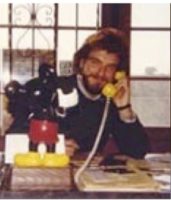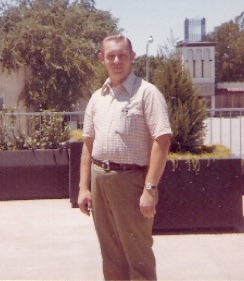by Charles Lear
UFO NewsclippingFor UFO researchers, and especially those interested in UFO history, the internet is a treasure trove. There are many, easily accessible archives online, with Archive.org, and Archives for the Unexplained being two of the main go-to sites. There is also a lot of material available thanks to researchers who preserved it on their sites during periods of active research and investigation, and the material remains despite many having ceased any major activity. Two examples are the websites left behind (and looked after by caring former members) by the National Investigations Committee on Aerial Phenomena and the Center for UFO Studies. Among the archived material can be found articles on UFO incidents clipped out of newspapers. These were gathered, in many cases, by individual researchers in the area of a UFO incident, or through the efforts of a network of members of some of the larger organizations, such as NICAP and CUFOS. Then, in 1969, a young UFO enthusiast took it upon himself to start a news-clipping service devoted to UFOs and other things fortean. He copied, cut, and pasted the clippings to put together a monthly publication, available by subscription, appropriately named the UFO Newsclipping Service.
According to Wikipedia, the first news-clipping service was started in London in 1852. Actors, musicians, artists, and writers came into the shop of a Polish newsagent named Romeike looking for reviews and news articles about themselves and their work. Romeike realized he could turn this into a business. Since then, clipping services developed that catered to all sorts of interests, and those existing today tend to cater to companies interested in news about their particular brand of goods or services.
That news-clippings could be an important source of information on UFO cases was recognized in 1952 by Captain Edward J. Ruppelt, who was then revitalizing the Air Force’s UFO investigation that was in transition from operating as Project Grudge to operating as Project Blue Book. Ruppelt tells the reader in Chapter 10 of his 1956 book, The Report on Unidentified Flying Objects, that he suggested to his superior that they use a news-clipping service and that his superior “liked the idea.” According to Ruppelt, newspapers sometimes got reports that didn’t go to the Air Force. Ruppelt adds: “Newspaper reporters rival any intelligence officer when it comes to digging up the facts, and there was always the possibility that they would uncover and print something that we’d missed.”
Fortean and UFO researcher John Keel, author of the 1975 book, The Mothman Prophecies, was known to have used news-clipping services in his work as a journalist and a reporter specializing in fortean subject matter. According to his friend, Loren Coleman, in a 2009 obituary Coleman wrote after Keel’s death, Keel subscribed to several news-clipping services. Coleman reports that Keel would sometimes get 150 clippings in a single day during a 1966-67 UFO flap. This must have been expensive and time consuming for Keel and others who made use of multiple services, but an alternative was just a couple years away.
 Roderick Dyke was 17 in 1969 and was the director of the UFO Research Committee. Even at that young age he was an active investigator. One case he looked into that year involved a film of UFOs captured by a Vallejo Junior College student in 1958. Documents related to the case dating back to March 1969 are preserved online at the NICAP site. These include Dyke’s correspondence regarding the film on stationary with the UFORC letterhead. There is a letter to the student, Clifford DeLacey, discussing analysis of the film, and another to Dr. Robert M. L. Baker regarding his use of the film in an American Association for the Advancement of Science presentation.
Roderick Dyke was 17 in 1969 and was the director of the UFO Research Committee. Even at that young age he was an active investigator. One case he looked into that year involved a film of UFOs captured by a Vallejo Junior College student in 1958. Documents related to the case dating back to March 1969 are preserved online at the NICAP site. These include Dyke’s correspondence regarding the film on stationary with the UFORC letterhead. There is a letter to the student, Clifford DeLacey, discussing analysis of the film, and another to Dr. Robert M. L. Baker regarding his use of the film in an American Association for the Advancement of Science presentation.
In May of that year, Dyke put out the very first issue of the UFO Newsclipping Service under the typewritten title “Monthly Clipping Service.” Dyke informs his subscribers that there are only eight of them at the moment and that he needs at least two more to continue. From this issue until issue 89, the publication is under the umbrella of the UFO Research Committee. With issue No. 90, the publication was under the umbrella of the Clearinghouse for U.F.O. News and Information. Issue No.1 consists of 15 photocopied pages filled with clippings, many from other clipping services; never before published 1969 UFO statistics from Project Blue Book; and three pages of historic clippings from 1947, which include two that mention Kenneth Arnold’s sighting. It’s an amateur looking publication but throughout the years it takes on a more professional look.
In the first issue, Dyke thanks an associate who provided him with clippings from Australia, and in the second he thanks a contributor who provided clippings from Canada, and one can see the beginnings of a network forming.
 In 1977, according to the supplement written by David Marler and included in the 40th Anniversary Issue, Dyke started looking for someone to take over as editor and that person ended up being Lucius Farish. Farish took over with issue 99 while Dyke remained as a contributor. At this point there is no umbrella entity named and the UFO Newsclipping Service stands on its own.
In 1977, according to the supplement written by David Marler and included in the 40th Anniversary Issue, Dyke started looking for someone to take over as editor and that person ended up being Lucius Farish. Farish took over with issue 99 while Dyke remained as a contributor. At this point there is no umbrella entity named and the UFO Newsclipping Service stands on its own.
Farish was a long-time UFO researcher, and in addition to being the editor of the UFONCS, Farish became the organizer and host of the Ozark UFO Conference in Eureka Springs, Arkansas. In 2007, the responsibility of taking on both tasks became too much and in December, Farish passed editorship responsibilities back to Dyke who carried on in that role until 2009. By this time, Dyke no longer had to cut and paste by hand, as home computers had long since become ubiquitous.
 In December of 2008, Dyke emailed David Marler telling him he was on a “very short list” of people he’d like to take over for him. The two had been in touch for several years through correspondence and exchanging, buying, and selling UFO-related memorabilia. Marler describes both himself and Dyke as “avid collectors.”
In December of 2008, Dyke emailed David Marler telling him he was on a “very short list” of people he’d like to take over for him. The two had been in touch for several years through correspondence and exchanging, buying, and selling UFO-related memorabilia. Marler describes both himself and Dyke as “avid collectors.”
Marler took over as editor in 2009 with issue 407. Marler kept the publication going until 2011 and put out the final issue, number 505, in August of that year. On the first page of issue 505 there is a message from Dyke. Dyke sums up the history of the over 44-year history of UFONCS, and tells the reader that in that time over 10,000 pages were printed containing over 30,000 clippings. He emphasizes that there was no editorializing throughout the publication’s history.
According to Marler, the UFONCS subscriber’s list was a “veritable ‘who’s who’ of UFOlogy, which is a testament as to its value among UFO researchers. While the service is no longer available to investigators of contemporary cases, every issue of the UFONCS publication is available online for historical researchers. Just the thing for a good indoor activity on a cold winter day.